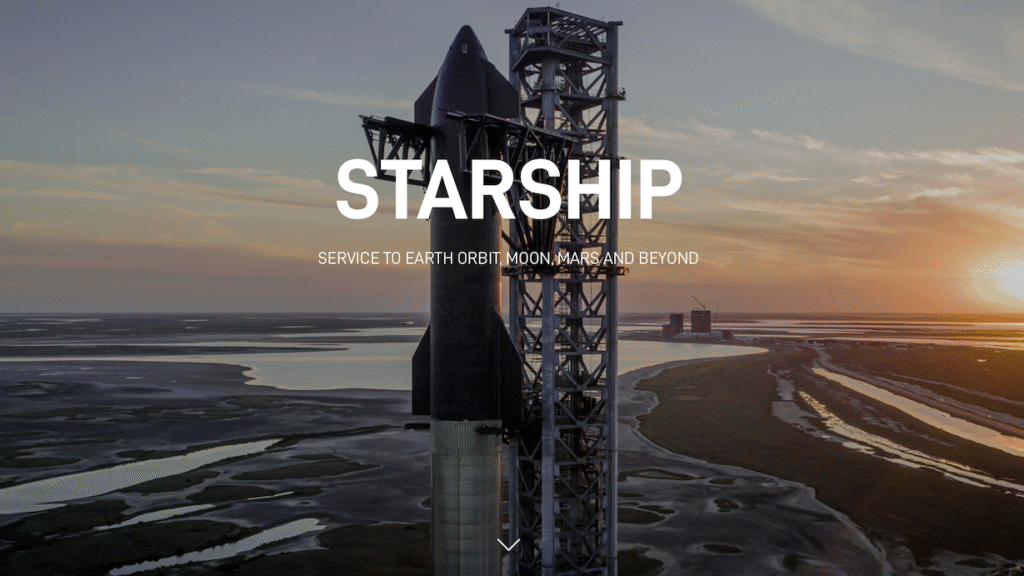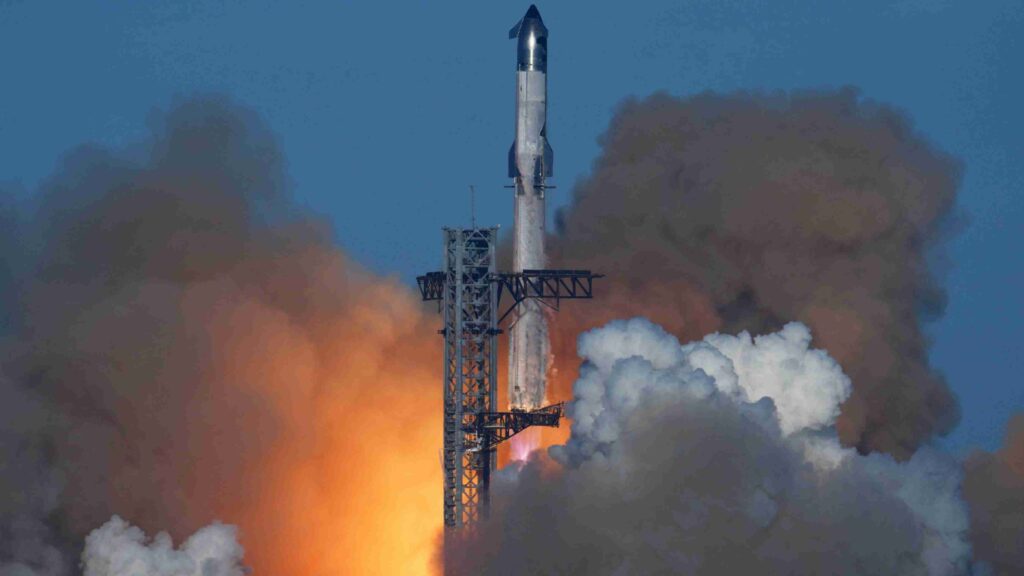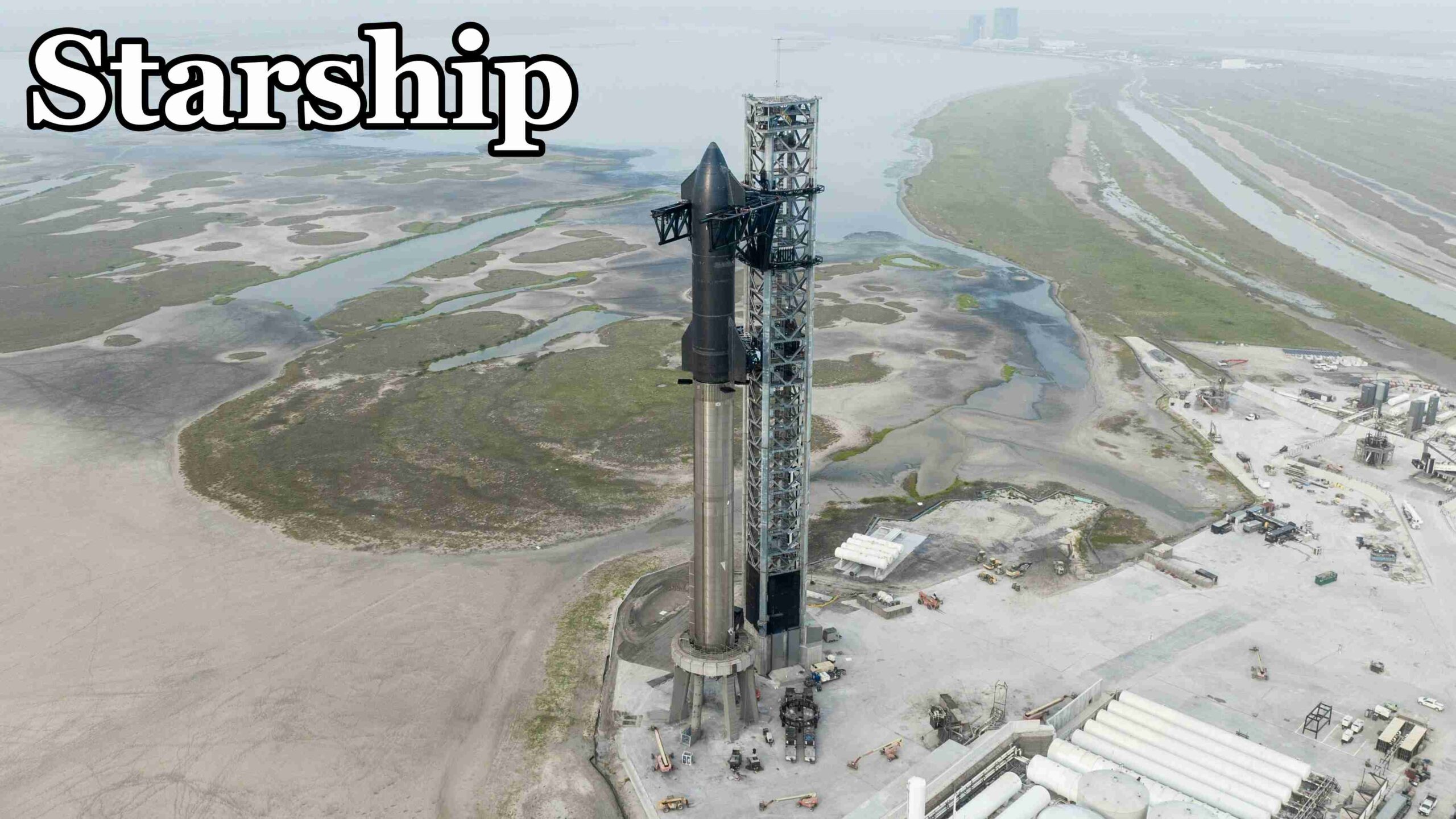SpaceX’s Starship Flight 12 plans were thrown into uncertainty when Booster 18 (B18) unexpectedly exploded at Massey. Early predictions suggested a three-month delay as SpaceX would need time to recover, investigate, and replace the destroyed hardware.
But SpaceX did what SpaceX always does — break expectations.
The company quickly announced a backup plan to maintain momentum and keep the 2026 schedule on track. Surprisingly, Flight 12 could still launch right after Ship 39 completes its static-fire test, proving once again that rapid iteration is baked into SpaceX’s DNA.
In this detailed analysis, we break down what happened, what SpaceX is doing next, and how the company plans to keep Starship Flight 12 on schedule despite losing a multi-million-dollar booster.
The Booster 18 Explosion — What Really Happened?
It’s been only three days since the Booster 18 incident, and the entire area at Massey is slowly returning to operational status. The explosion left the A-section of B18 torn wide open, rendering the whole booster too unstable and dangerous to move.

Because of this, SpaceX made the decision to perform on-site disassembly, essentially conducting a surgical teardown right where B18 fell.
How SpaceX Dismantled the Destroyed Booster
To begin the teardown:
- A large crane and a smaller lift were positioned beside the damaged booster.
- The forward section, which houses the CH₄ tank, was sliced off using a laser torch.
- That entire section was then lifted down and cut into three smaller pieces, including the hot-staging ring.
Despite being cut apart, these pieces remain enormous — a full 9-meter diameter, making them extremely heavy and challenging to transport.
The lower two-thirds of the booster, where most of the structural damage occurred, is expected to be cut into even smaller chunks, effectively reducing a multi-million-dollar booster into scrap stainless steel worth less than $1 per kilogram.
This is an expensive loss — but not one that slows SpaceX’s learning curve.
Why This Failure Still Benefits SpaceX
While the explosion turned tens of millions of dollars into scrap metal, it also delivered something far more valuable: real-world engineering data.
SpaceX is currently moving aggressively into its Block 3 Starship and Super Heavy era, with major upgrades to propulsion, hot staging, and propellant management. A booster rupture, while costly, provides engineering insights that simulations simply cannot match.
Moreover, Ship 39, the Block 3 upper stage destined for Flight 12, is preparing for its own cryo tests. Lessons from B18’s destruction could directly improve the safety margins of the upcoming vehicle pair.
Failures teach more than successes.
And for SpaceX, engineering tuition has always been high — but incredibly productive.
Will the Booster Loss Delay Starship Flight 12?
At first glance, losing B18 would suggest a major schedule setback. B18 was expected to support Starship Flight 12, originally targeted for early 2026.
But surprisingly, SpaceX has already confirmed:
Starship Flight 12 remains on schedule for Q1 2026.
Instead of waiting for months, SpaceX says the next Super Heavy — Booster 19 (B19) — will be ready much sooner than anticipated.

SpaceX’s Official Timeline for B19
According to SpaceX:
- B19 stacking begins in December 2025
- All booster sections are already staged inside Starfactory
- After rolling to Mega Bay 1, stacking takes ~1 week
- Internal integration (plumbing, tanks, transfer tubes) takes ~1 month
- Cryo testing could begin by late December
If everything goes as planned, B19 will be test-ready before the new year.
But despite SpaceX’s confidence, there’s an elephant in the room…
Is a Q1 2026 Launch Really Possible?
SpaceX executives, including Kiko Donv, VP of Launch, stated during the Economist Space Summit that the company originally aimed for a January 2026 launch.
However:
- The booster exploded
- B19 is not yet assembled
- Ship 39 still needs static-fire and cryo tests
- Integrated testing takes weeks, not days
So while Q1 2026 is still the official target, in reality the launch could slip toward March or April without being considered a major delay.
Still — SpaceX has a contingency.
A surprising one.
Could SpaceX Use Booster 12 as a Backup?
Believe it or not, Booster 12 (B12) still exists — and it’s in relatively good shape.
This booster was famously caught by Mechazilla during Starship Flight 5, becoming the first booster ever caught by the chopsticks. After its historic landing:
- It underwent inspections
- The FTS system was removed
- It was placed in Rocket Garden for display
But then something unexpected happened…
The Strange Return of Booster 12
On August 6, 2025, B12 was quietly rolled from Rocket Garden back to Mega Bay 1.
This sparked theories:
- Was B12 being upgraded?
- Were engines being swapped?
- Was it being restored as a reserve booster?
Even more suspiciously, it wasn’t returned to Rocket Garden until after Flight 10. Many observers believe it was being prepared as a backup for Booster 16 in case problems emerged.
Now, B12 is in the best condition it’s been in since its tower catch, leading to speculation that SpaceX could fly it for Flight 12 to maintain a January schedule.

Could B12 Actually Fly Again?
Technically, yes.
Practically… no.
Here’s why:
- B12 is a Block 2 booster, while Flight 12 requires Block 3 hardware
- Block 3 includes:
- Raptor 3 engines
- A fully integrated interstage
- Three grid fins (instead of four)
- A redesigned propellant architecture
- Support for >100 tons to orbit
B12 is simply not compatible with what Flight 12 is supposed to demonstrate.
Fully rebuilding it to Block 3 specs would be slow, inefficient, and more expensive than finishing B19.
SpaceX confirmed this in a post on X, emphasizing:
Booster 19 will be stacked in December to support Flight 12.
That alone ends speculation: B12 will not fly again — at least not for Flight 12.
Why Booster 18 Exploded — And Why That Matters
The B18 rupture is not without precedent. In fact, it mirrors a similar event in 2020, when NASA intentionally over-pressurized the SLS core stage LOX tank at Stennis. The tank burst along a weld seam — exactly where the design predicted it would fail.
SpaceX seems to have encountered a comparable structural limit.
Both incidents highlight a key truth:
Cryogenic propellant tanks are inherently risky at high pressures.
Whether intentional or not, the B18 rupture will help SpaceX:
- Improve future weld geometry
- Refine structural load models
- Strengthen pressure margins
- Increase Block 3 reliability
In short: this failure will accelerate Starship development, not slow it.
The Bigger Picture — Starship V3 and the Path Forward
Flight 12 isn’t just “another Starship test.” It represents a major leap:
- Starship V3 debuts
- Mechazilla tower landings must be validated
- Orbital refueling tests are next
- Payload targets exceed 100 tons to orbit
Every day matters, which is why SpaceX is so committed to maintaining the Q1 2026 launch window.
Once Ship 39 and B19 fly successfully, SpaceX can sprint forward toward its loftiest goals:
- Building an in-orbit propellant depot
- Enabling regular lunar missions
- Supporting Mars cargo flights later in the decade
The B18 explosion is a setback — but not a trajectory change.
Outside SpaceX — Big Moves in the Commercial Space Race
While SpaceX dominates headlines, other space companies are advancing rapidly.
November 2025 marks a major milestone for Starlab, the commercial space station led by Voyager Space with partners like:
- Airbus
- Mitsubishi
- MDA Space
- Palantir
- and more
This station aims to replace the ISS after 2030 under NASA’s Commercial LEO Destinations Program.

Major Starlab Funding Secured
On November 20, global asset manager Janus Henderson Group (over $484B AUM) announced a strategic investment in Starlab.
Portfolio manager Jonathan Coleman stated that Starlab:
- Has the best design
- Uses the lowest-cost architecture
- Features the most compelling business model
- Outperforms competitors like Axiom Station and Orbital Reef
This funding accelerates Starlab’s transition from design to physical hardware.
Starlab’s New Partnership With Leidos
On November 5, Starlab partnered with Leidos, a major U.S. defense contractor, to lead:
- Module assembly
- System integration
- Functional and environmental testing
- Crew-safety engineering
- Ground support operations
The work will occur at Leidos facilities in Alabama.
CEO Marshall Smith praised the partnership, saying Leidos brings “proven experience” essential to delivering a safe, efficient station.
Technical Progress and 2025 Milestones
Starlab is preparing multiple demo missions with NASA, including:
- A new urine-processing system
- Free-space optical communications testing
- Structural testing with welds, static loads, and pressure tests
The team aims to complete the Preliminary Design Review (PDR) and Phase 1 Safety Review before year’s end.
While SpaceX pushes toward Mars, companies like Voyager and Airbus are building the next generation of commercial low-Earth-orbit infrastructure.
The future space economy will not be led by one company — but by an ecosystem.
Final Thoughts — Starship Marches On
Despite the explosive setback, SpaceX has shown once again that it refuses to slow down.
With Booster 19 already queued for stacking, Ship 39 ready for cryo testing, and the company laser-focused on a Q1 2026 timeline, Starship Flight 12 remains very much alive.
Failures will continue — that’s how Starship evolves.
But each failure also sharpens the design, improves reliability, and moves SpaceX closer to its long-term goals.
If you believe in SpaceX’s momentum —
drop a “Go Starship!” in the comments.
The road to Mars is built one booster at a time. And even when one explodes, the mission continues.
FAQs
1. What caused SpaceX’s Booster 18 to explode?
Booster 18 experienced a rupture in its LOX tank during pressure testing at Massey, likely due to structural or pressure-related stress similar to past high-pressure tank failures seen in NASA testing.
2. Will the Booster 18 explosion delay Starship Flight 12?
Surprisingly, no. SpaceX confirmed that Flight 12 is still on schedule for Q1 2026, despite losing the booster intended for that mission.
3. What booster will support Starship Flight 12 now that B18 is destroyed?
SpaceX plans to use Booster 19 (B19), which will begin stacking in December and continue through rapid integration and testing.
4. How long does it take SpaceX to stack a new Super Heavy booster?
Stacking typically takes about a week, while internal integration (tanks, plumbing, structure) takes around one month.
5. Could SpaceX reuse Booster 12 for Flight 12?
Technically possible but practically unlikely. B12 is a Block 2 booster, while Flight 12 requires a Block 3 design, making it incompatible without extensive rebuilding.
6. What upgrades does the Block 3 booster have?
Block 3 includes Raptor 3 engines, an integrated interstage, three grid fins, improved propellant architecture, and support for 100+ tons to orbit.
7. What is Ship 39, and why is it important?
Ship 39 is the Block 3 upper stage for Flight 12. It must complete cryo testing and static-fire tests and will demonstrate Starship V3 improvements.
8. When is the earliest possible launch date for Starship Flight 12?
SpaceX originally aimed for January 2026, but realistically the launch may slip into February or March, depending on testing outcomes.
9. How expensive was Booster 18 before it was destroyed?
Each Super Heavy booster costs tens of millions of dollars to manufacture. After the explosion, its scrap steel value is less than $1 per kilogram.
10. Why does SpaceX treat failures as learning opportunities?
Rapid iteration is central to SpaceX’s engineering philosophy. Failures provide critical data that accelerates improvements to future vehicles.
11. What is the major goal of Starship Flight 12?
Flight 12 aims to debut Starship V3, validate Mechazilla landing attempts, and prepare the system for orbital refueling flights.
12. What happened to Booster 12 after its historic tower catch?
B12 underwent post-flight inspections, had its FTS removed, was moved to Rocket Garden, and briefly returned to Mega Bay 1 before being displayed again.
13. How is Starlab related to NASA’s future plans?
Starlab is part of NASA’s Commercial LEO Destinations Program, intended to replace the ISS after 2030 with privately developed space stations.
14. Who recently invested in Starlab?
Global asset manager Janus Henderson Group, with over $484 billion in assets, made a significant investment to accelerate Starlab’s development.
15. What milestones is Starlab working on for 2025?
Starlab plans NASA demo missions, including a urine processor test, optical communication links, and completing its Preliminary Design Review.
Read More:
- Tesla Full Self-Driving v14.2’s best new feature is not what you think
- Tesla breaks Norway’s all-time annual sales record with one month to spare
- Tesla Sweden faces fresh union blockade at key Gothenburg paint shop
- SpaceX maintains unbelievable Starship target despite Booster 18 incident
- Tesla has passed a critical self-driving milestone Elon Musk listed in Master Plan Part Deux


1 thought on “SpaceX just announced Major Plan Changes on Starship Flight 12 after B18 exploded”